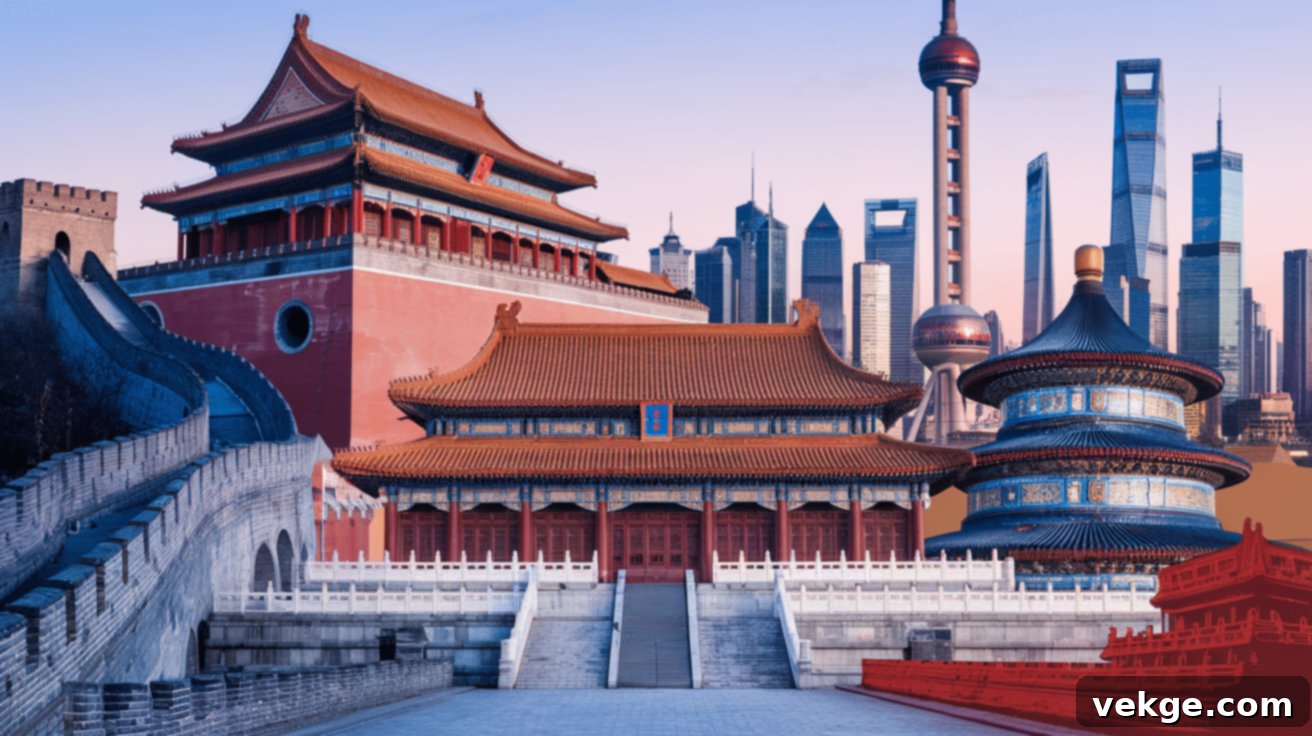Exploring China’s Architectural Wonders: From Ancient Dynasties to Modern Skylines
China is a land of unparalleled architectural marvels, boasting a rich tapestry of structures that span millennia. From the awe-inspiring ancient Great Wall, a testament to human resilience, to the gleaming contemporary heights of the Shanghai Tower, its built environment narrates a profound story of history, culture, and innovation. With such a vast array of remarkable landmarks, understanding the unique essence and significance of each can be a truly enriching experience.
This comprehensive guide invites you on a journey through the captivating world of famous Chinese architecture. We will delve into iconic buildings, unravel the deep cultural and philosophical meanings embedded within their designs, and explore how these magnificent structures have shaped China’s landscape and identity over centuries. Whether you are planning an immersive visit to these architectural wonders or simply curious about their enduring legacy, this guide will provide you with the essential insights needed to appreciate their beauty, historical depth, and cultural importance.
The Enduring Foundations of Chinese Architecture
The distinctive character of Chinese architecture has been profoundly shaped by its natural environment, climatic conditions, and deeply rooted cultural philosophies. Early designs meticulously utilized readily available local materials such as wood and stone, with a fundamental goal of blending seamlessly with the surrounding nature. This harmony between human creation and the natural world remains a cornerstone of Chinese architectural thought.
Influential philosophies like Confucianism, Taoism, and Buddhism have provided the conceptual framework for countless structures, promoting core values such as balance, harmony, order, and a profound respect for nature. Grand imperial palaces embodied Confucian principles of hierarchy and order, while serene temples and pagodas reflected Taoist harmony and Buddhist tranquility, each designed to evoke specific spiritual or societal ideals.
Building Materials and Sophisticated Techniques
The selection of building materials in traditional Chinese architecture was driven by a practical understanding of their local availability and their inherent ability to withstand diverse environmental challenges. Beyond mere utility, these materials also became mediums for the display of meticulous craftsmanship, a central pillar of traditional Chinese building methods that emphasized durability and aesthetic grace.
Wood, Brick, and Earth: In ancient China, primary construction materials included robust wood, durable bricks, and versatile stone, all sourced from various regions across the vast landscape. Wood, in particular, was a favored choice due to its strength, flexibility, and remarkable suitability for China’s varied climates and seismic activity. Its elasticity allowed structures to sway with earthquakes, preventing collapse, while its abundance made it a practical resource for large-scale construction projects.
Exquisite Craftsmanship: Chinese builders were renowned for their exceptional skill in joinery and intricate woodwork. The ingenious use of complex wooden beam systems, often employing the famous *Dougong* (bracket sets), and precise mortise-and-tenon connections allowed for the construction of buildings without the need for nails or glue. This careful, interlocking craftsmanship not only ensured the longevity and structural integrity of buildings but also made them surprisingly resilient and easier to repair or even reconstruct over vast spans of time, demonstrating an early form of sustainable building practices.
Traditional Chinese Architectural Styles
Traditional Chinese architecture encompasses a rich diversity of designs, each deeply influenced by cultural narratives, historical epochs, and spiritual beliefs. These styles collectively reflect China’s profound connection to the natural world, the significance of cosmic balance, and the intricate symbolism woven into every structural element. The resulting designs are both profoundly practical and richly symbolic, forging an unbreakable link to the nation’s ancient past.
Imperial Architecture: Symbols of Power and Majesty
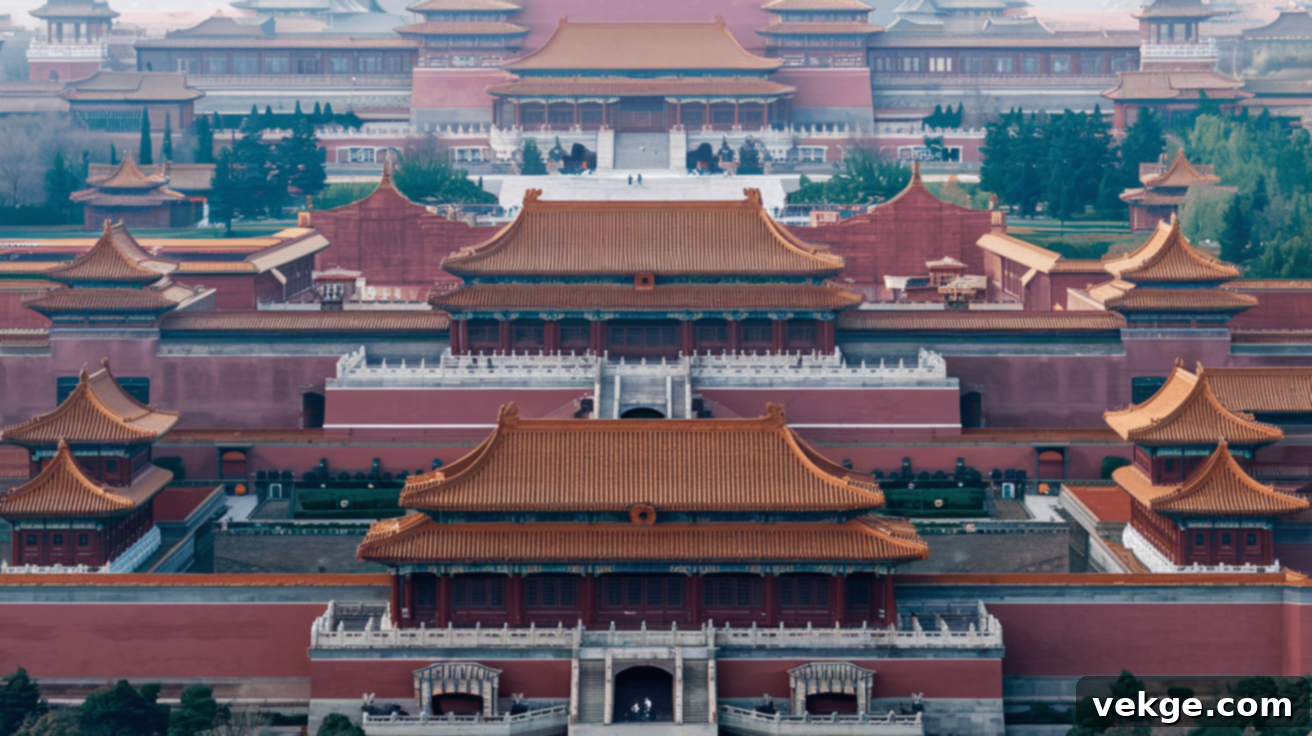
Imperial architecture in China is characterized by its unparalleled grandeur and overt symbolism, explicitly designed to project the immense power, authority, and divine mandate of the emperor. These majestic structures are typically colossal in scale, meticulously crafted with premium materials, and adorned with elaborate decorations that proclaim imperial might. The precise layout, symmetrical arrangement, and vibrant color schemes of these buildings reflect the paramount importance of order, hierarchy, and cosmic harmony within traditional Chinese culture. They were unequivocally meant to impress, intimidate, and profoundly reflect the emperor’s celestial role as the Son of Heaven.
The Forbidden City: Perhaps the most iconic example of imperial power, the Forbidden City in Beijing stands as a monumental symbol of imperial authority. Its sprawling layout meticulously follows strict rules of symmetry, balance, and axial alignment, emphasizing the emperor’s central position in the universe. Every detail, from the vibrant yellow roofs (symbolizing the emperor) to the carefully chosen animal motifs, was designed to reinforce the emperor’s connection to both heaven and earth, creating a powerful narrative of cosmic governance and absolute rule.
Imperial Palaces and Gardens: The Summer Palace, also in Beijing, offers another exquisite example of imperial architecture, seamlessly blending grand palaces with breathtaking natural landscapes. Its design masterfully integrates man-made structures with lakes, hills, and intricate gardens, creating a harmonious environment for royal leisure and contemplation. The blend of pavilions, bridges, and natural scenery reflects the aesthetic ideal of integrating human artistry with the beauty of nature, a hallmark of refined Chinese imperial taste.
Religious Architecture: Spaces for Spiritual Reflection
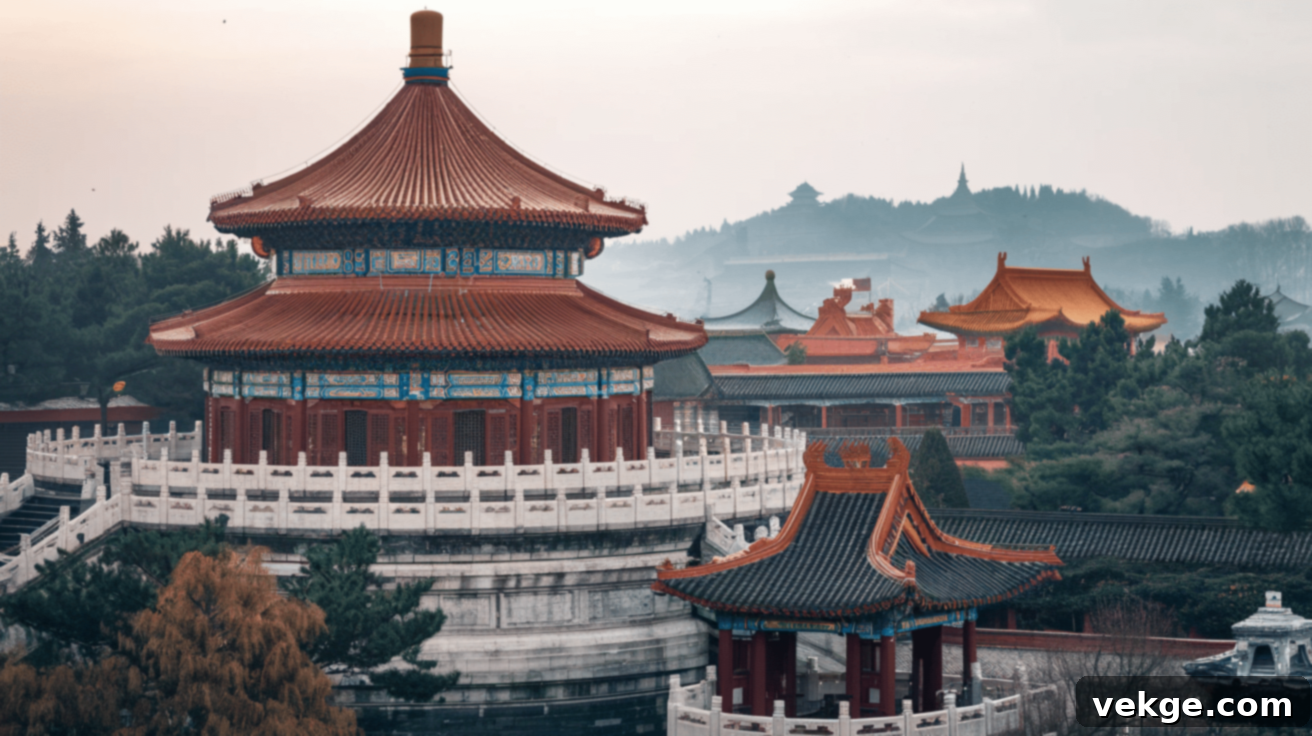
Religious architecture in China is characterized by its emphasis on harmony, peace, and spiritual devotion. Temples and pagodas, integral to Buddhist, Taoist, and Confucian traditions, were constructed as sacred spaces to honor deities, venerate spirits, and foster a connection with nature. These buildings are incredibly rich in symbolism, with every element, from the layout to the color scheme, reflecting deep spiritual beliefs and cosmological understanding. They are designed to offer sanctuary for quiet reflection, communal worship, and a profound connection to the divine, serving as spiritual anchors for communities.
Temples and Pagodas: Temples and pagodas played a crucial role in the propagation of Buddhist and Taoist traditions across China. Temples typically feature a series of courtyards and halls, creating a journey towards enlightenment, housing revered statues of gods and providing tranquil spaces for ceremonies and personal worship. Pagodas, often multi-tiered towers with upturned eaves, originated from Indian stupas and evolved into distinctly Chinese forms. They served as reliquaries for sacred relics, observation towers, and symbolic representations of the path to spiritual ascension, often becoming the visual focal points of temple complexes.
The Temple of Heaven: The Temple of Heaven in Beijing is arguably one of China’s most significant religious sites, renowned for its architectural perfection and profound symbolism. It was specifically designed for emperors to perform elaborate ceremonies and make sacrifices to Heaven, praying for good harvests and acknowledging their divine mandate. The circular forms of its main buildings (like the Hall of Prayer for Good Harvests) represent Heaven, while the square bases symbolize Earth, reflecting the ancient Chinese belief in a “round heaven and square earth.” Its precise alignment and layout were meticulously calculated to align with cosmological principles, embodying the profound relationship between the emperor, humanity, and the heavens.
Modern Chinese Architecture: A Fusion of Past and Future
In recent decades, China has experienced an astonishing architectural transformation, marked by the rapid emergence of a dynamic modern skyline. This section explores the rise of contemporary Chinese architecture, focusing on groundbreaking landmarks and the innovative architects who are shaping the nation’s future. We will also examine how traditional design philosophies are being skillfully blended with avant-garde concepts and China’s increasing commitment to sustainability in its ambitious architectural projects.
Contemporary Landmarks: Redefining the Skyline
China’s modern architecture has undergone a dramatic evolution, exemplified by the proliferation of super-tall skyscrapers like the iconic Shanghai Tower, the distinctive CCTV Tower in Beijing, and the striking National Grand Theatre. These monumental buildings represent a bold leap towards modernity, showcasing China’s rapid economic growth, technological prowess, and growing global influence. Contemporary designs frequently incorporate subtle yet powerful nods to traditional Chinese elements, as seen in the National Stadium, often called the “Bird’s Nest,” which combines innovative structure with a sense of organic, natural form, reflecting both cutting-edge innovation and deep cultural heritage.
Innovative Chinese Architects and Sustainable Visions
Architects such as the legendary I. M. Pei, whose work has influenced global design, paved the way for a new generation of Chinese and international architects collaborating within China. Modern Chinese architects continue to push boundaries, combining boundless creativity with functionality and a strong emphasis on sustainability. They are at the forefront of adopting energy-efficient building practices, utilizing green technologies, and designing eco-friendly structures that minimize environmental impact. China’s dedication to modern, eco-friendly architecture is not only redefining its own urban landscapes but is also setting a global benchmark for a more sustainable and technologically advanced future.
Iconic Chinese Buildings: Timeless Masterpieces
Let us now explore some of China’s most iconic and architecturally significant buildings, each possessing a unique design narrative and profound historical importance that continues to captivate visitors worldwide.
1. The Great Wall of China
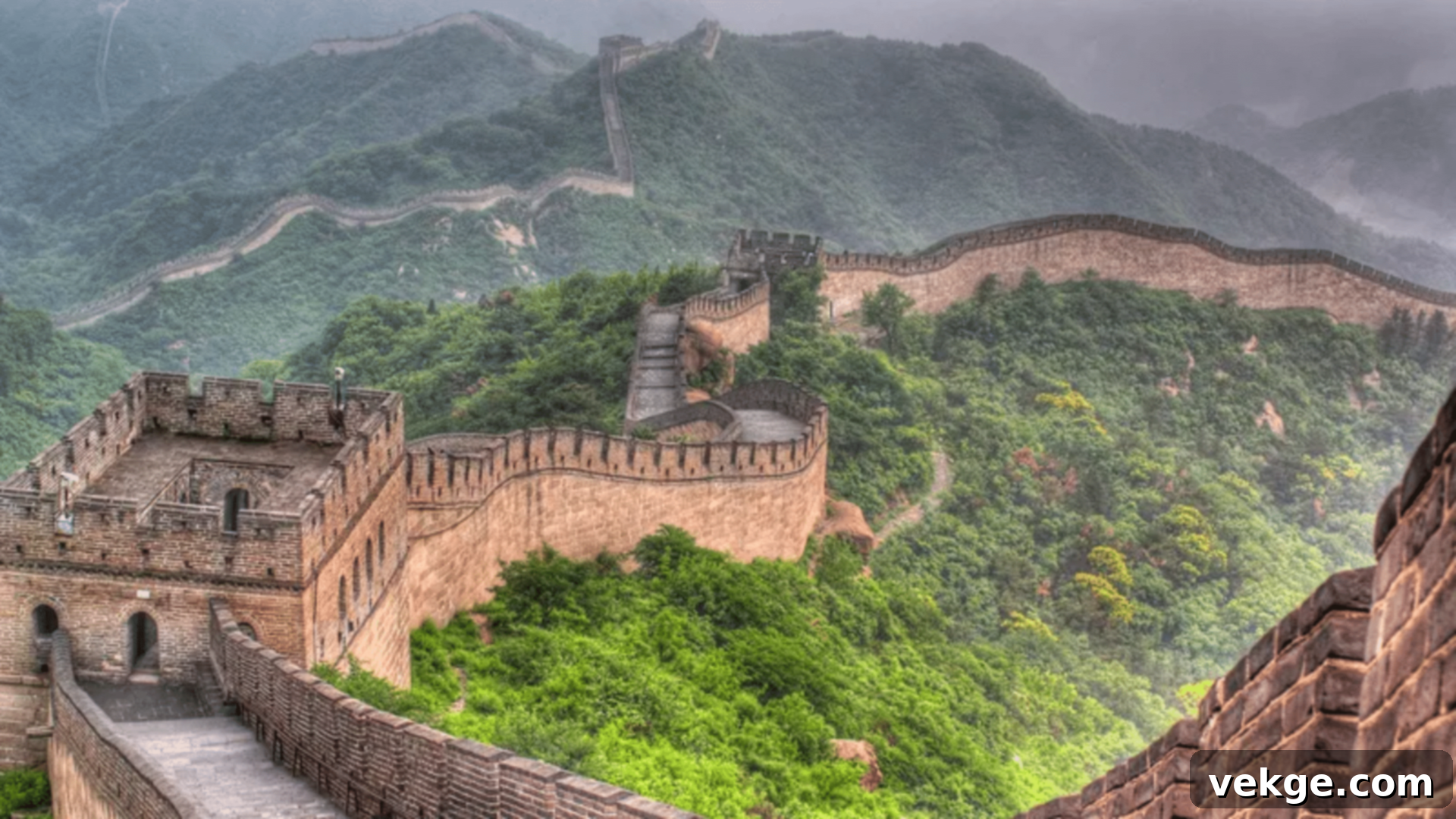
The Great Wall of China, an astonishing feat of engineering stretching over 13,000 miles (21,000 kilometers) across northern China, is undoubtedly one of the most famous architectural achievements in human history. Built over many centuries by various dynasties, primarily from the 7th century BC to the Ming Dynasty (1368-1644 AD), it served as a formidable defensive barrier against invasions from nomadic tribes. The wall’s design and construction materials vary significantly across different regions, reflecting the diverse architectural techniques, local resources, and the topography of the landscape it traversed. Its sheer scale and the effort required for its construction make it a symbol of ancient China’s organizational capabilities and perseverance.
2. Potala Palace
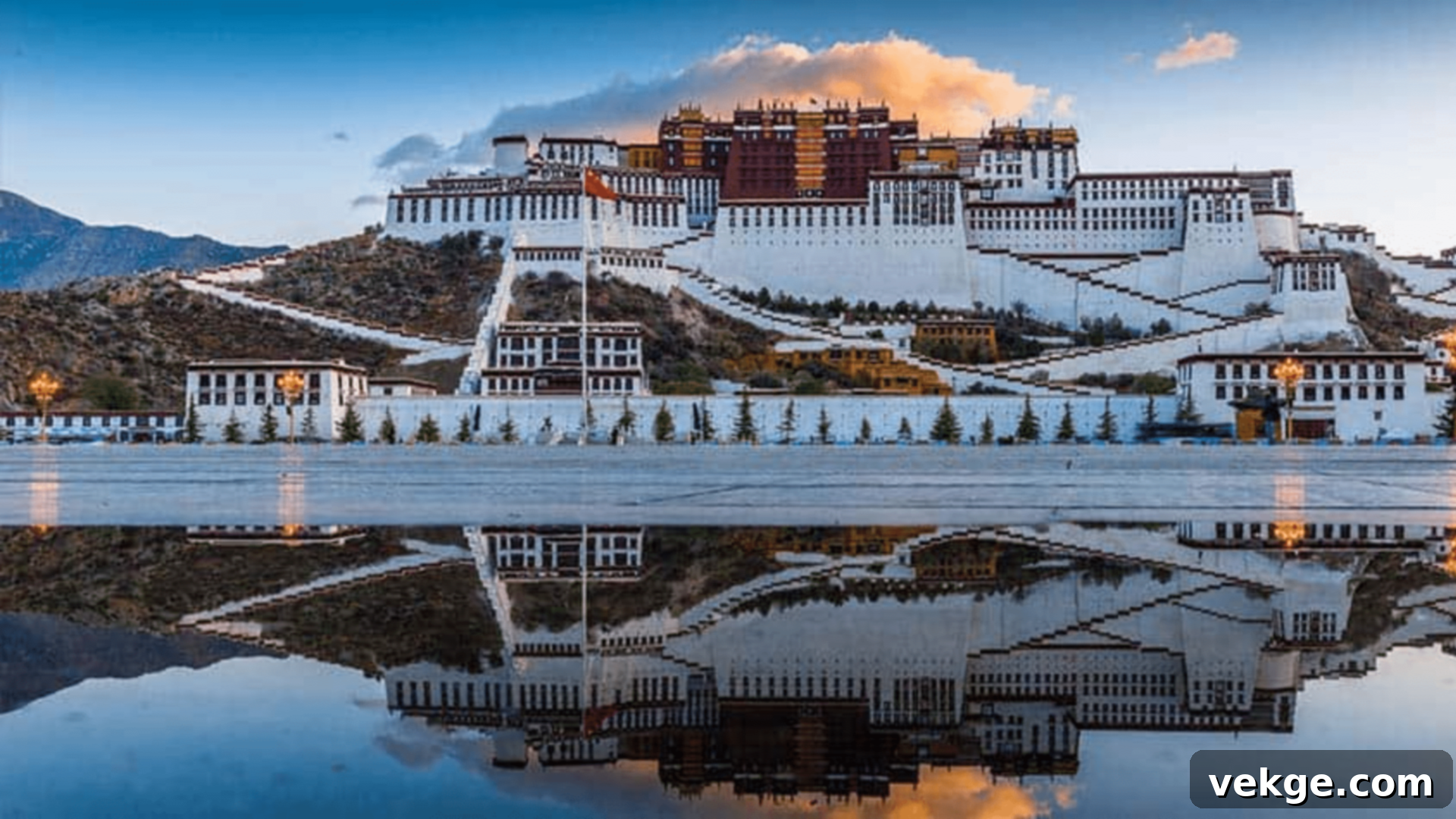
Perched majestically atop Marpo Ri (“Red Hill”) in Lhasa, Tibet, the Potala Palace is a truly remarkable example of traditional Tibetan architecture. This towering fortress-like complex, once the winter palace and spiritual home of the Dalai Lamas, stands as a UNESCO World Heritage site and a profound religious and cultural landmark. Its grand, imposing design, with its distinctive white and red sections, deeply reflects Buddhist principles and cosmology. Within its thick walls, the palace houses an astonishing collection of ancient artwork, precious scriptures, sacred artifacts, and intricate murals, making it an unparalleled spiritual and historical treasure for Tibetan Buddhism and the world.
3. Jin Mao Tower
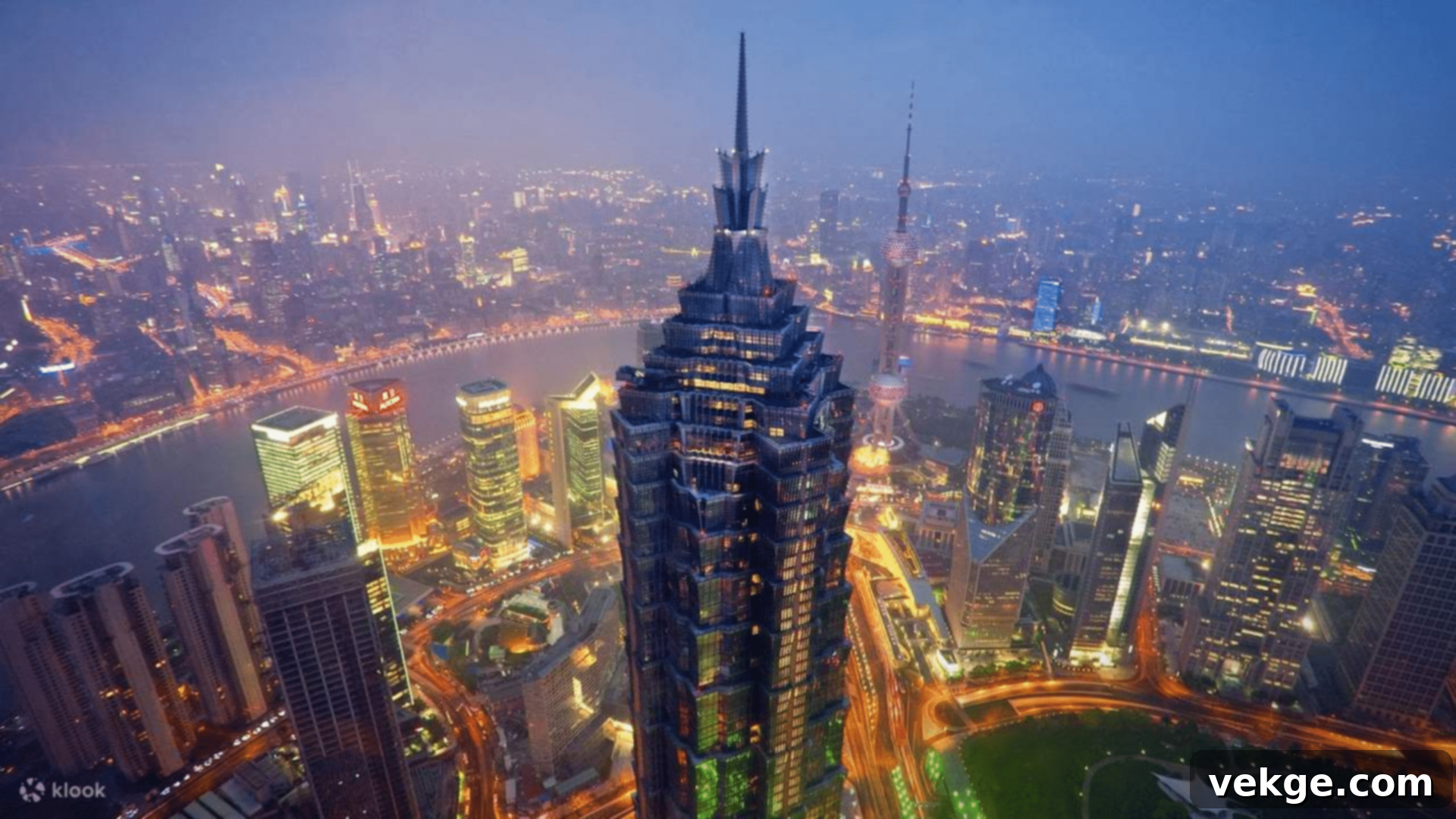
Dominating the Pudong skyline of Shanghai, the Jin Mao Tower stands as one of China’s pioneering super-tall skyscrapers and a symbol of the nation’s rapid modernization. Soaring to a height of 420.5 meters (1,380 feet) with 88 stories, its design ingeniously blends traditional Chinese architectural elements with cutting-edge modern engineering. The building’s distinctive shape is inspired by the tiered form of a traditional Chinese pagoda, and the number 8, considered highly auspicious in Chinese culture, is prominently featured throughout its design (88 stories, 8-sided core). The Jin Mao Tower beautifully symbolizes China’s rich cultural history while simultaneously showcasing its remarkable achievements in contemporary construction and innovative design.
4. Oriental Pearl Tower

An unmistakable icon of modern Shanghai, the Oriental Pearl Tower is a distinctive television tower that has become synonymous with the city’s futuristic identity. Standing at an impressive 468 meters (1,535 feet), the tower’s avant-garde design features eleven spheres, large and small, linked by three columns, creating a sleek and visually striking structure. Opened in 1995, it was briefly the tallest structure in China. With multiple observation decks offering breathtaking panoramic views of Shanghai’s sprawling cityscape, the Oriental Pearl Tower has solidified its place as one of the city’s most recognizable landmarks and a powerful emblem of China’s rapid ascent into the 21st century.
Symbolism in Chinese Architecture: Decoding Deeper Meanings
Beyond their structural integrity and aesthetic appeal, Chinese architectural masterpieces are steeped in profound symbolism. In this section, we will explore how symbolism plays an absolutely key role, where every design element, from the overall layout to the smallest decorative motif, reflects a deeper meaning intricately tied to Chinese culture, philosophy, and ancient beliefs.
Feng Shui and Symbolic Design Elements
Feng Shui, an ancient Chinese art and science, profoundly influences the placement, orientation, and design of buildings to create optimal harmony and balance with the surrounding environment. It serves as a guiding principle for arranging structures to promote the flow of positive energy, or “chi,” believed to bring good fortune, health, and prosperity. The practice of Feng Shui meticulously considers every element—from the site’s topography to the building’s orientation—ensuring that structures align harmoniously with natural forces to encourage peace, well-being, and sustained abundance.
Symmetry is a paramount principle in Chinese architecture, symbolizing balance, order, and imperial authority, often seen in grand palaces and temples. Colors also carry deep symbolic weight: red signifies good fortune and joy; yellow represents the emperor and earth; green symbolizes growth and harmony; and black is associated with nobility and water. Furthermore, the alignment of buildings with cardinal directions and celestial bodies reflects a cosmological worldview, connecting earthly structures to the vastness of the cosmos and the rhythms of nature.
The Artful Use of Space and Structure
Chinese architecture places immense emphasis on creating harmony and balance through thoughtful space design, often integrating built forms with natural elements. Traditional homes, such as the *Siheyuan* (courtyard house), are meticulously built around open central courtyards, symbolizing internal freedom, family unity, and a direct connection to nature. These open courtyards not only provide light and ventilation but also foster social interaction and create a tranquil, introspective environment, serving as the heart of the home.
Roof styles are another distinct and highly symbolic feature. The iconic sweeping roofs with gracefully upturned eaves are not merely decorative; they serve practical purposes by deflecting rain and providing shade, but more importantly, they carry significant symbolic meaning. These elegant curves are believed to ward off evil spirits and attract good fortune and prosperity, reflecting the building’s spiritual connection to both nature and cultural beliefs. Decorative roof figures, such as guardian animals, further reinforce these protective and auspicious sentiments, making the roof a powerful element of architectural expression.
Architectural Preservation and Enriching Tourism
In this dynamic era, China faces the crucial task of preserving its extraordinary architectural heritage while simultaneously accommodating the demands of modern development. This section discusses the ongoing efforts to protect these ancient treasures, alongside practical advice for tourists seeking to explore these iconic sites responsibly and respectfully.
Preserving China’s Invaluable Cultural Heritage
China is deeply committed to preserving its ancient architectural legacy, balancing the imperative of protection with the necessities of modern progress. Extensive efforts are continuously made to restore and maintain iconic sites such as the awe-inspiring Mausoleum of the First Qin Emperor (home to the Terracotta Army) and the magnificent Temple of Heaven. The government invests heavily in advanced conservation techniques and robust preservation programs, focused not only on maintaining the structural integrity and historical authenticity of these landmarks but also on integrating them sensitively within contemporary urban landscapes. This delicate balance ensures that these irreplaceable sites remain relevant, accessible, and protected for future generations, offering visitors a unique opportunity to experience both China’s profound history and its remarkable advancements.
Tourism and Architectural Exploration: Practical Tips
To truly maximize your architectural exploration of China, planning your visit strategically is key. The most agreeable weather for sightseeing is typically during spring (April to May) or autumn (September to October), offering mild temperatures and clearer skies. Many significant sites require tickets, and it is highly advisable to book these well in advance, especially during peak travel seasons, to avoid long queues. Always confirm the specific opening hours of each landmark before your visit, as these can vary and may be subject to change.
When visiting China’s revered architectural sites, it is of utmost importance to show respect for local customs and traditions. Maintain a polite and quiet demeanor, particularly within temples and sacred spaces, to preserve their tranquil atmosphere. Always be mindful of designated sacred areas, which may require removing shoes or refraining from photography. Dress modestly, covering shoulders and knees, especially when entering religious buildings. By adhering to these simple guidelines and respecting any rules set by the site, you demonstrate appreciation for the immense cultural and spiritual importance these buildings hold, ensuring a meaningful and respectful experience for yourself and others.
Wrapping Up: The Enduring Legacy of Chinese Architecture
The magnificent realm of famous Chinese architecture offers an unparalleled window into the country’s profound history, vibrant culture, and boundless creativity. From the monumental ancient wonders like the Great Wall, a symbol of national defense, and the majestic Forbidden City, an embodiment of imperial power, to the dazzling modern structures such as the futuristic Shanghai Tower and the distinctive CCTV Tower, each building tells its own compelling story.
These extraordinary landmarks not only reflect China’s rich cultural traditions and deep philosophical underpinnings but also demonstrate its remarkable capacity for innovation and its forward-looking embrace of modern advancements. Visiting these sites provides a unique opportunity to connect intimately with the nation’s illustrious past and its exciting future, offering insights that transcend mere observation.
If you plan to visit China, make it a priority to explore these architectural gems; take the time to truly appreciate their intricate beauty, historical depth, and the stories they whisper. With this comprehensive guide, you now possess a clearer understanding of what makes Chinese architecture so exceptionally unique and profoundly important. Whether you are traveling the globe to see them firsthand or learning from afar, these iconic sites are undeniably worth knowing and cherishing.
